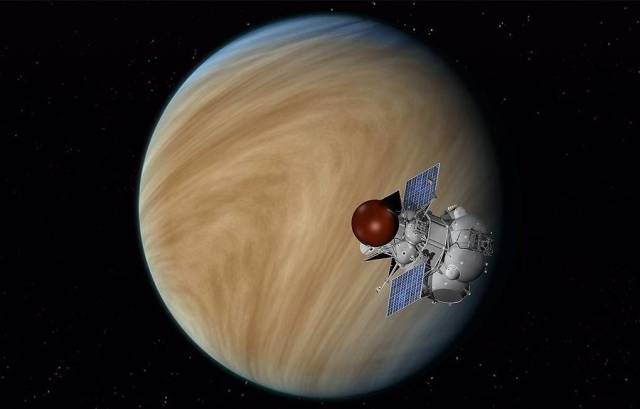The launch of the spacecraft should be carried out in 2029
MOSCOW, May 17. /TASS/. Roscosmos has signed a contract with the Lavochkin NPO for the development of a technical proposal for the new generation Venera-D space complex for basic space research. This is stated in the documents on the public procurement website.
The contract amount is 318.15 million rubles. According to the terms of reference, the S. A. Lavochkin NGO will perform work on the topic "Creation of a new generation of space complexes for basic space research. Development of a technical proposal for the QC. The code of the SCH OCD: "Perspective" ("Venus-D "(TP))".
The work will be carried out on the basis of the draft roadmap for the start of work on the Venus exploration program approved by the Russian Academy of Sciences and Roscosmos. The work is expected to be completed by February 28, 2023.
By this time, the feasibility study of the mission and possible design solutions should be carried out to ensure the study of the atmosphere, surface, internal structure and surrounding plasma of Venus at the current level, the study of the possibility of returning to Earth samples of the soil, atmosphere and aerosols of Venus, as well as a draft technical specification for the space complex for the study of Venus "Venus-D".
"The composition of the Venera-D space complex should be determined at the stage of the technical proposal, based on the use of existing and created in Russia RKN [space rockets] of a heavy class (PH [launch vehicle] "Angara-A5" with RB [upper stage] DM-03)," the technical task says. It is specified that the launch of the spacecraft should be carried out in 2029.
In early March, Scientific Director of the Space Research Institute (ICI) Academician of the Russian Academy of Sciences Lev Zeleny told TASS that the design of the interplanetary automatic station Venera-D is beginning in the Russian Federation, and contracts are being concluded with the performers. According to the academician, the main contours of the Russian Venusian program will be clarified during the ongoing design. It would take, Zelyonyi suggested, two years.



